Where wine will be in 2080?
Wine has come a long way since its beginning, est. 12’500 years ago. From its origins as a simple beverage, wine has evolved over the past 40 years into an affordable luxury, and more recently into a real asset. This week, we explore its transformation through time, and look at what may lie ahead for wine in the future.

6,000 BC • First proven traces of wine production in Georgia.
1,000 BC • Greeks and Romans refine winemaking techniques, expanding vineyard cultivation across Europe.
12th century • Bordeaux is the first region to establish an export market, thanks in large part to the marriage of Henry Plantagenet and Aliénor d’Aquitaine in 1152. The date marks the start of a long and prosperous trade relationship between Bordeaux and Great Britain.
17th Century • Bordeaux structures its export market through growing interest from Dutch traders. The Place de Bordeaux is born.
1855 • Bordeaux establishes the official Classification of Médoc wines, still in existence today.
1863 • Shortly after, the spread of phylloxera devastates vineyards worldwide, especially in Europe, with a 75% of French vineyards destroyed.
1976 • The Judgment of Paris wine tasting takes place, in which blind-tasted California wines outperform the French.
1978 • Lesser known, a similar blind tasting takes place in Bolgheri, wherein three Super Tuscans beat Bordeaux first growths, establishing Bolgheri and its powerful wines from international grape varieties on the global wine map.
1978 – 1983 • Robert Parker begins publishing The Wine Advocate newsletters. His ratings of the exceptional Bordeaux 1982 vintage mark the start of his substantial critical influence which would grow to move markets on wine demand and pricing.
2000 • Bordeaux first growths break the 100€/bottle psychological barrier. The Liv-ex exchange platform is created, facilitating access to wine data, and ultimately kick-starting the trading of wine as an investment.
2011 • China enters the market for Bordeaux quickly and aggressively, causing a pricing bubble for Bordeaux, particularly of the 2009 and 2010 vintages. The resulting fall-off in purchases from Asia causes a temporary crash for Bordeaux wines with a -54% peak to trough spread of the Liv-ex 100 index between August 2011 and July 2014.
2020 – 2022 • Amid the Covid-19 pandemic, fine wine witnesses the fastest ever two-year demand and price increase (with the Liv-ex 100 up 39%). Wine prices cool off during 2023, resulting in a CAGR of the Liv-ex 100 since 2020 of 8%.
Today’s era is a lucky one. Thanks to massive investment in viticultural and winemaking technology, endless passion and talent of winemakers, combined with favourable climatic conditions, we are experiencing the best wines humanity has ever made.
2024 – 2040 • Climate change continues to create volatility in winemaking regions, ranging from excess heat and drought through to torrential rain, spring frost, and summer hailstorms, reducing the yield of high-quality wine production.
2080 • Global temperatures have increased dramatically, triggering the replacement of grape varieties in top traditional winemaking regions. Vineyards for everyday consumption wines have moved northwards. Iconic estates complement their small harvests with sales of back vintage stock. Their new vintages produce good wines, albeit in a style that is radically different to what was produced during the golden years of fine wine – c.2000-2030.

